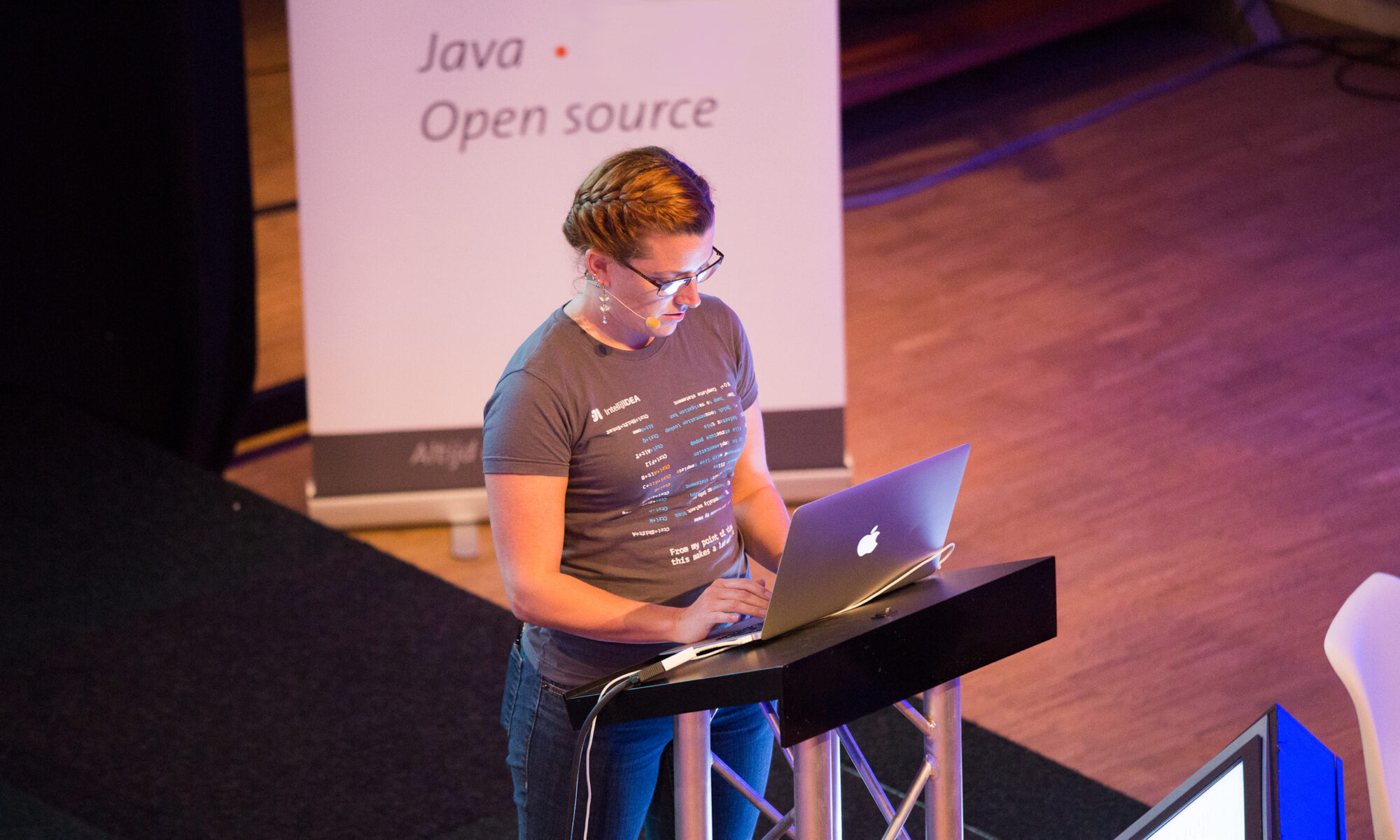It’s 2018, and we still
- Have conferences with only one woman speaker
- Regularly see all-male panels
- See only a small subset of ethnicities represented
- Use language that excludes people from job advertisements
By now we’ve heard that diversity makes for better teams, better products, and better leadership, and it seems like the industry has been beating itself up about it for some time now. Why isn’t it fixed? What can we do? This session is for those who feel passionate about diversity and inclusion, whether you’re someone from an underrepresented group or an ally. It’s also for those wondering what all the fuss is about and those asking whether they should be making changes to their company, their events, or their own approaches.
Here’s a list of some of the interesting articles I’ve read recently about diversity in the workplace.
The way you recruit people matters
The researchers documented an unwelcoming environment for these women, including sexist jokes and imagery, geeky references, a competitive environment, and an absence of women engineers—all of which intimidated or alienated female recruits.
From https://www.wired.com/story/why-are-there-few-women-in-tech-watch-a-recruiting-session/
Diversity in Computer Science Graduates
The juggernauts of the first computing revolution like HP and IBM actually had reasonable gender diversity, and IBM had its first female VP back in 1943. But fast forward to 2014 and just 31 percent of Facebook’s employees are women.
…while the nation has, overall, increased the number of CS course offerings in K-12 education, black and Hispanic students are less likely to have access to those resources. They’re also at a disadvantage outside of the classroom: Two-thirds of white students report using computers at home, whereas only half of black and Hispanic students do
“Women were majoring in computer science because it was something they were expected to be good at.” Since then, the number of women studying CS has been falling pretty steadily since the 80s, despite the increase in demand for these types of skills.
A study from Georgetown University found that more women are studying STEM majors, they’re just not choosing computer science.
From https://www.wired.com/story/computer-science-graduates-diversity/ (contains charts)
How being in the minority affects you at work
From our interviews, we recognized four strategies that women reported using to deal with this situation.
From https://hbr.org/2018/10/the-problem-of-visibility-for-women-in-engineering-and-how-they-manage-it?autocomplete=true Good overview of how women have to downplay being women (or up-play tech skills)
gendered conditioning tends to encourage men to be stoic and independent
It’s a direct example of how working with people you can relate to can positively influence your career.
Sponsorship is very important. The black community where I work we have a hard time finding that.
From https://hbr.org/2018/03/how-black-women-describe-navigating-race-and-gender-in-the-workplace
Evaluating people fairly
women must outperform men to be evaluated similarly.
Because investment professionals with names more likely to be considered female do not differ in terms of performance and other observable characteristics, our analysis provides strong evidence that evaluators are incorporating gender into their assessments.
However, there is a silver lining: In our sample, women were not penalized at the second stage of the evaluation process. We found no gender difference in the ratings or number of comments recommendations received.
This is consistent with previous research that has shown people exhibit greater reliance on status signals, such as gender, when there is greater uncertainty about quality.
This suggests that when women — and probably other underrepresented groups, too — are being evaluated, such as for a job, they may benefit from presenting more information about their experience and performance, to minimize ambiguity about their quality.
Additionally, our research suggests that while policy interventions, such as providing opportunities for women and minorities in investment management, help redress skewed distributions of the workforce, women still may face unfair assessments once in the field.
For example, our results suggest that search costs in evaluations (having many options to consider) intensifies gender bias.
The Technology Gender Gap
By analyzing its massive database, Entelo created a fresh and detailed picture of the current status of women in tech. Report findings include:
- Overall only 18 percent of roles in tech, including engineering, data science, product design and more, are held by women in the U.S., and the ratio falls even more sharply when considering seniority.
- The more senior the position, the lower the proportion of women. While at entry level and mid-level, women account for 19 percent of tech roles. At the senior level, the percentage drops to 16 percent, and at the executive level, only 10 percent of roles in tech are held by women.
- The proportion of women in tech also varies by function. When looking at engineering, data science, and product design roles specifically, Entelo found that engineering had the lowest percentage of women (17 percent) while product design has the highest (36 percent).
- Additionally, by region, gender diversity in tech is nearly identical from the west coast to the midwest to the east coast. On the west coast, women accounted for 18 percent while the midwest saw 17 percent. On the east coast, 19 percent of tech roles were filled by women.
Some nice charts showing the gender and ethnicity information for a number of key technology firms https://informationisbeautiful.net/visualizations/diversity-in-tech/
Further, the data showed a 50% drop in representation from women when comparing entry-level to executive roles within the technology industry.
They discovered a near-universal playbook to the bias women face at work, which falls into four main categories: the Prove-It-Again bias; the Tightrope bias of being too masculine or too feminine; the Tug of War; and the Maternal Wall. Of the four, the Maternal Wall bias was the most blatant, in part because many people don’t see it as a bias; they see it as biology.
A key finding was that the female-founded companies in its portfolio performed 63 per cent better than those founded by men.
Research has backed up the obvious: a study by the Federal Reserve Bank of St. Louis found that over 30-year careers, mothers were far more productive than women without children at nearly every point in their careers.
Fathers with one child performed similarly to childless men, but men with multiple kids were more productive than the rest of the men studied (although the increase in productivity was nowhere near as dramatic as it was with women).
From https://www.wired.co.uk/article/sarah-lacy-gender-bias-silicon-valley
Pay inequality
Another stunning but perhaps unsurprising finding was that 63% of the time, men were offered higher salaries than women for the same role at the same company.
Women in tech also tended to undervalue their market worth, asking for less pay 66% of the time, and would often ask for 6% less salary than their male counterparts.
This finding suggests that if a company wants to attract key talent, taking steps to eliminate pay gaps within their company would be a clear recruitment tool for all genders.
The gender wage gap also increases with age. When women start in their careers, between the ages 20-25, they make $0.97 for every dollar men in similar roles earn. The gap widens by the time workers are in their forties, increasing to $0.90 on the dollar.
White women earn 96 cents on the dollar compared to White men. White women also outpace the earning of Black and Hispanic men, who earn 94 cents on the dollar.
She noted that the report found that identifying as LGBTQ+ negatively affects salaries for men, but women who identify as LGBTQ+ actually make more money than other females.
When it comes to effectively combatting bias and closing earning gaps, study after study shows that transparency wins the day.
Women, however, outnumber men in lower-tier jobs, such as secretarial and administrative roles, whereas men predominate in senior positions. And women cluster in occupations and industries that pay lower salaries overall.
The ISS data found that companies have not promoted women at the same rate into leadership board positions, even though they come in with greater qualifications than their male counterparts.
This time out of the workforce for caregiving may compound the impact of earlier leave taken to care for a child.
From https://www.caregiver.org/women-and-caregiving-facts-and-figures Lots of scary and interesting stuff in there
The second shift
So women work a longer second shift than men, a difference of 1.1 hours daily, though men work longer hours on the first shift.
That said, at least one recent survey found that 97% of professionals had some flexibility in their jobs. Men are more likely to work remotely than women.
From https://www.fastcompany.com/3055391/revisiting-the-second-shift-27-years-later
it was not until the late 2000s that a group of young women earned more than the median young man—but only women who were unmarried, childless, living in a city, and 22-30 years old.
When some work is underpaid or not paid at all, other workers (or nonworkers) in the economy are correspondingly overpaid
From https://thefeministwire.com/2012/04/gender-equity-still-requires-a-focus-on-the-second-shift/
In 2007, researchers at Cambridge University looked into the average working week. For women in full time employment they worked an average of 68 hours (including commuting, domestic work and child care). The average working week for a man was 55 hours (including commuting and domestic work).
But reality was so different. If she was to grow a successful business then she decided to employ a nanny. She lived with the guilt of this decision for many years.
From http://www.handbagsintheboardroom.com/double-burden-second-shift-holds-women-back/
And the wider the class gap, and the more people fall into the lower class, the more bad news.

